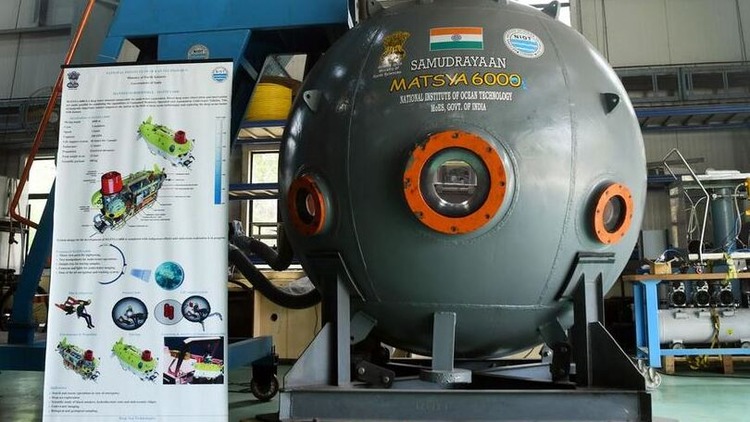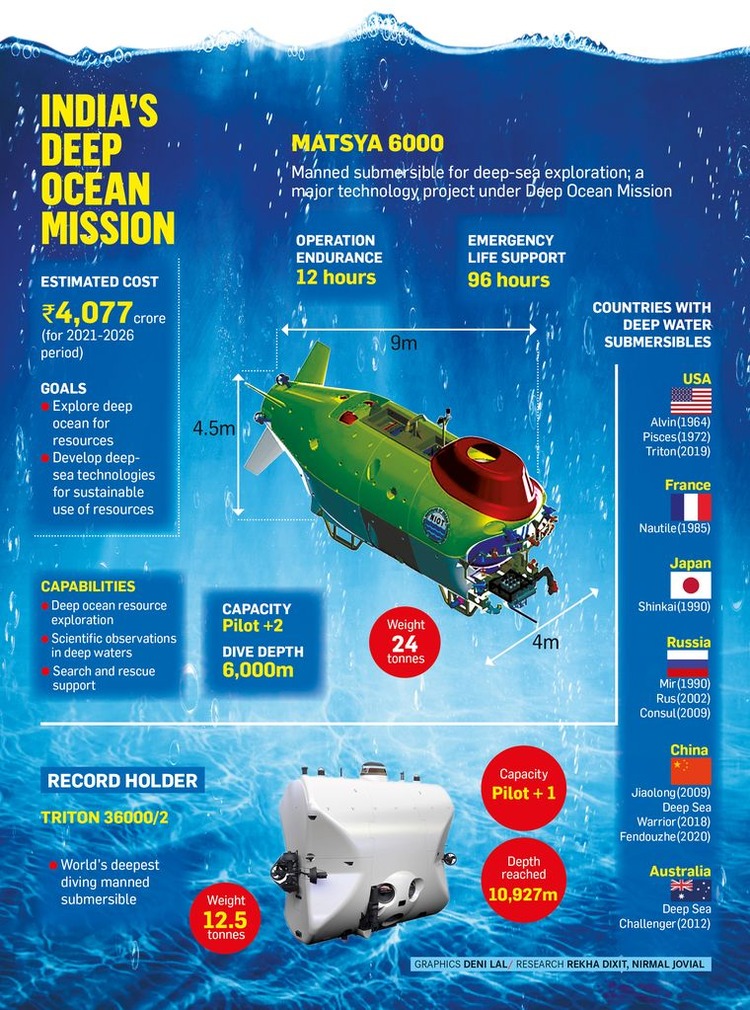India’s Exciting Deep-Sea Mission Set to Launch in 2024

Minerals are discovered at a depth of six thousand meters; India becomes the sixth country to make a manned submersible.
India is gearing up for its inaugural deep-sea mission scheduled to kick off in 2024. The mission involves deploying a human-occupied submersible named ‘Matsya 6000’ into the depths of the ocean. The first trial of this submersible is planned at a depth of 500 meters in the Bay of Bengal. By 2026, it aims to reach staggering depths of 6000 meters in the open ocean. India is poised to achieve a significant milestone as it becomes the first country to develop a human submersible for this purpose, surpassing efforts by major nations like the United States, Russia, Japan, France, and China.
The primary objective of the Indian government
The primary objective of the Indian government behind this ambitious mission is to extract valuable metals and minerals from the ocean floor. These resources, including cobalt, nickel, and sulfides, are essential for manufacturing electronic devices such as mobile phones and laptops. ‘Matsya 6000,’ constructed from a resilient titanium alloy, boasts impressive capabilities. It can operate continuously for 12-16 hours, features an oxygen supply sufficient for 96 hours, stretches 2.1 meters in length, and accommodates up to three occupants. Remarkably, this submersible is engineered to endure pressures 600 times greater than those found on the ocean’s surface.
“Matsya 6000” is Made of Titanium Alloy
What is a submersible, and how is it different from a submarine?
Researchers at the National Institute of Ocean Technology (NIOT) are currently scrutinizing the design of ‘Matsya 6000.’ The development of this advanced submersible was completed by NIOT scientists within a mere two-year timeframe and is currently undergoing rigorous testing. The decision to review the design came after a tragic incident in June 2023 when a submersible named ‘Titan’ sank in the Atlantic Ocean, resulting in the unfortunate demise of five billionaires. Submersibles and submarines may seem similar, but they exhibit distinctions in design, functionality, and purpose. Submarines are typically larger and can carry multiple occupants, frequently employed for surveillance and military missions.

Designed
In contrast, submersibles are exclusively designed for underwater exploration and often necessitate a specialized vessel or platform for deployment. Both types are separate from submersible watercraft, which can operate both on the water’s surface and beneath it, often driven by electricity or diesel engines. These larger vehicles are commonly used for purposes such as surveillance, research, and military applications.
Permission to explore only 14 countries for research purposes.
Venturing into the depths of the ocean is driven by the rising demand for metals, driven in part by the increasing popularity of electric vehicles and their batteries. Essential elements like lithium, copper, and nickel, sourced from the ocean’s depths, are pivotal in battery production. Cobalt, another vital component, finds its use in electric cars, while manganese is indispensable in the steel industry. The current production levels of these metals are insufficient, prompting exploration of deep-sea mining as a viable solution. The International Seabed Authority (ISA), affiliated with the United Nations, has granted special permissions to 14 countries for ocean floor exploration. These countries include China, Russia, South Korea, India, Britain, France, Poland, Brazil, Japan, Jamaica, Nauru, Tonga, Kiribati, and Belgium.
In 2021, the Indian Government greenlit the Deep Ocean Mission
In 2021, the Indian government greenlit the ‘Deep Ocean Mission.’ This initiative is dedicated to the exploration of marine resources and the development of deep-sea technology, with a vision to bolster the blue economy. The blue economy is an economic system entirely reliant on marine resources.
Concurrently, other nations such as Sweden, Ireland, Germany, France, Spain, New Zealand, Costa Rica, Chile, Panama, Palau, Fiji, and Micronesia are advocating for a ban on deep-sea mining.
You May Also Read




